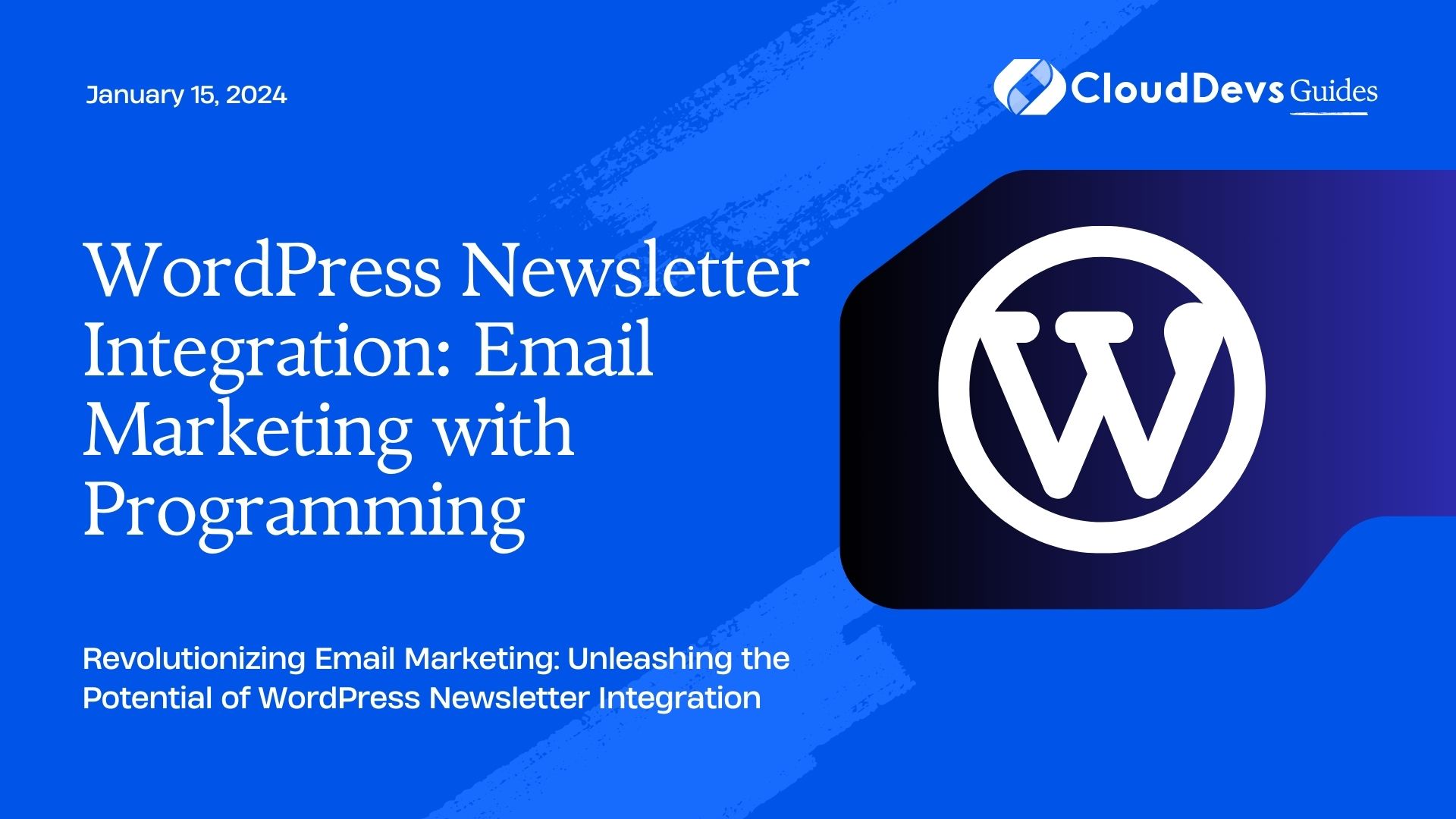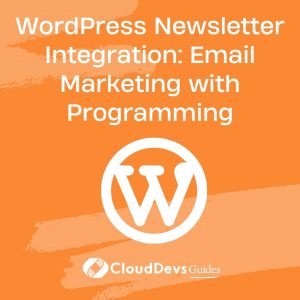WordPress Newsletter Integration: Email Marketing with Programming
In the dynamic realm of digital marketing, email campaigns remain a potent tool for engaging audiences and driving conversions. However, manually managing these campaigns can be a cumbersome task as your subscriber list grows. This is where the power of programming and automation comes into play. Integrating your WordPress website with email marketing services can drastically enhance your efficiency and results. In this blog, we’ll delve into the world of WordPress newsletter integration, explore the benefits, provide step-by-step guidance, and share valuable code samples to streamline your email marketing efforts.
Table of Contents
1. The Power of WordPress Newsletter Integration
1.1. Streamlining Communication and Engagement
Efficient communication is at the heart of successful email marketing. Integrating your WordPress website with an email marketing service like Mailchimp, Constant Contact, or SendinBlue empowers you to seamlessly manage and send newsletters to your subscribers. This integration automates the process of collecting email addresses, segmenting your audience, and sending targeted content, ultimately boosting engagement.
1.2. Harnessing Data for Personalization
Personalized content significantly enhances the impact of your emails. Through integration, you can harness user data from your WordPress site to create highly targeted campaigns. By analyzing user behavior, interests, and preferences, you can tailor your newsletters to deliver relevant content, resulting in higher open rates and click-through rates.
1.3. Time and Effort Efficiency
Manually managing an expanding email list is both time-consuming and error-prone. With integration, you can automate subscription management. When a user signs up on your WordPress site, their information is automatically added to your email marketing platform. This not only saves time but also reduces the likelihood of data entry mistakes.
2. Step-by-Step Guide to WordPress Newsletter Integration
2.1. Choosing an Email Marketing Service
Before you begin, select an email marketing service that suits your needs. Factors like pricing, features, and ease of integration should guide your decision. For this guide, we’ll use Mailchimp as an example.
2.2. Creating an Account and Audience
- Sign up for an account on your chosen email marketing platform.
- Create an audience or list within the platform. This is where your WordPress subscribers will be stored.
2.3. Generating API Keys
API keys allow your WordPress site to communicate securely with your email marketing service. For Mailchimp, follow these steps:
- Log in to your Mailchimp account.
- Go to Account > Extras > API keys.
- Generate a new API key.
2.4. Installing a WordPress Plugin
Search for and install a plugin that facilitates the integration with your chosen email marketing service. Plugins like “Mailchimp for WordPress” or “OptinMonster” work well. Here’s how to do it:
- In your WordPress dashboard, go to Plugins > Add New.
- Search for your chosen plugin and click “Install” followed by “Activate.”
2.5. Configuring the Plugin
Using the plugin you’ve installed, connect your WordPress site to your email marketing service:
- Navigate to the plugin’s settings, usually found in the dashboard’s sidebar.
- Enter the API key you generated earlier.
- Follow the prompts to authorize the connection.
2.6. Creating Opt-In Forms
Opt-in forms are essential for gathering user email addresses. Most integration plugins provide tools for designing and embedding these forms on your site:
- Create a new opt-in form within the plugin’s settings.
- Customize the form fields, design, and behavior.
- Obtain the shortcode or embed code for the form.
2.7. Embedding Forms on Your Website
To collect email addresses, place the opt-in forms strategically on your website:
- Create a new page or post (e.g., “Subscribe to Our Newsletter”).
- Paste the shortcode or embed code into the content area.
- Publish the page.
3. Enhancing Integration with Programming Techniques
3.1. Customized Subscription Triggers
Programming allows you to set up custom subscription triggers beyond standard opt-in forms. For instance, you can create a pop-up modal that appears after a user interacts with a specific element on your site, such as reading a certain number of blog posts. This targeted approach enhances user experience and boosts conversions.
javascript
// Example code for displaying a subscription modal after reading 3 blog posts
(function($) {
let postsRead = 0;
$(document).on('click', '.blog-post', function() {
postsRead++;
if (postsRead === 3) {
// Display your subscription modal code here
}
});
})(jQuery);
3.2. Dynamic Content Segmentation
Segmenting your audience based on their interactions with your site is a powerful strategy. Through programming, you can automate the process of adding users to specific email lists or tags. For instance, you can automatically add subscribers who’ve downloaded an eBook to a “Ebook-Interested” segment.
php
// Example code to add a user to a specific segment after downloading an eBook
function add_to_ebook_segment($user_id) {
if (has_downloaded_ebook($user_id)) {
// Add user to "Ebook-Interested" segment using the email marketing API
}
}
add_action('user_register', 'add_to_ebook_segment');
4. Best Practices for WordPress Newsletter Integration
4.1. Regular List Maintenance
Regularly clean your email list by removing inactive or bounced email addresses. This enhances your sender reputation and ensures your emails reach the right audience.
4.2. A/B Testing for Optimization
Programming can be employed to set up A/B tests for email subject lines, content, and design. This data-driven approach helps you refine your email marketing strategy.
4.3. Compliance with Regulations
Ensure your integration setup complies with data protection regulations like GDPR. Obtain explicit consent from users before adding them to your email list.
Conclusion
WordPress newsletter integration brings together the worlds of email marketing and programming, offering you the means to streamline your campaigns, engage your audience more effectively, and drive better results. By following our step-by-step guide and incorporating programming techniques, you’ll be well on your way to mastering the art of email marketing automation. Embrace the power of integration and witness your email campaigns soar to new heights of success.
Table of Contents








